#michel-jean cazabon
Text
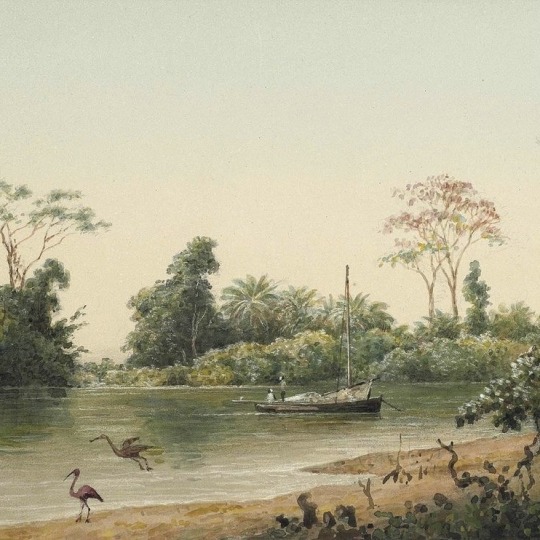
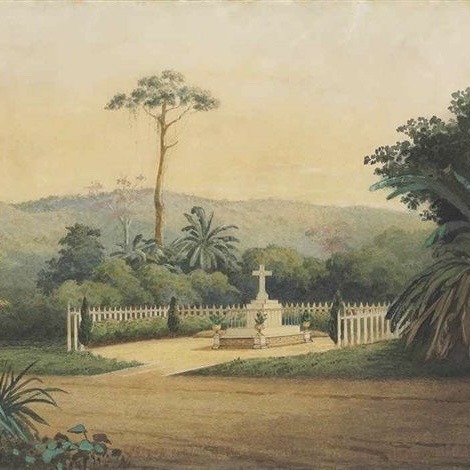
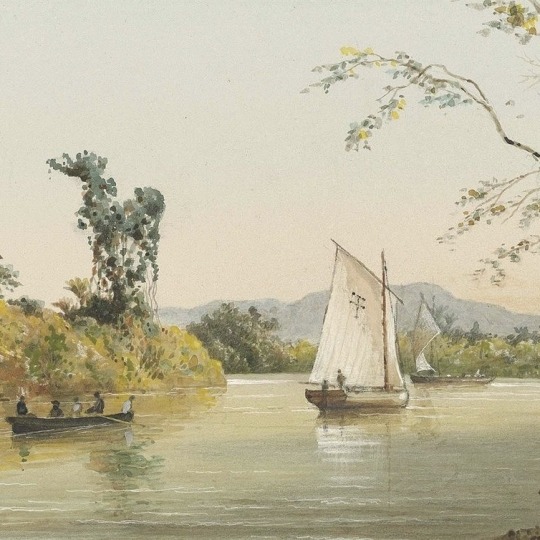
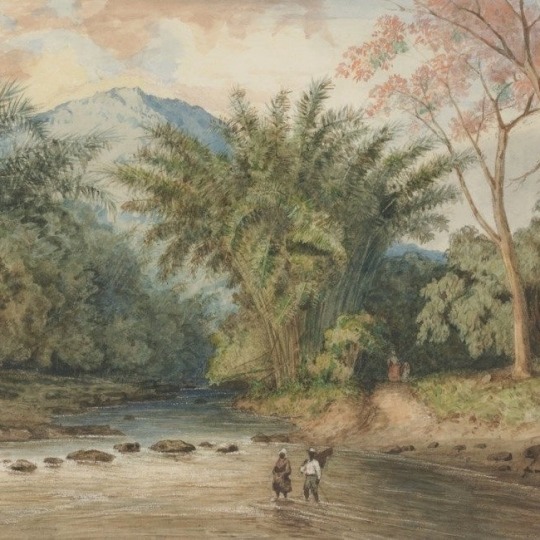
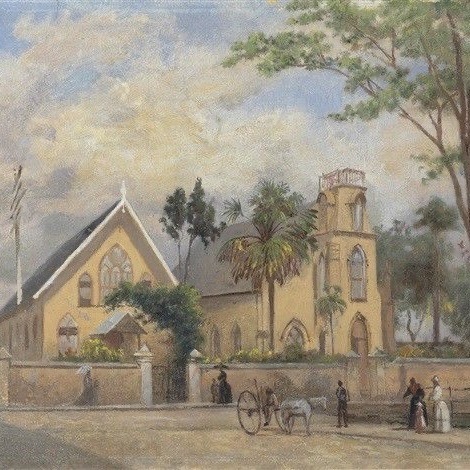



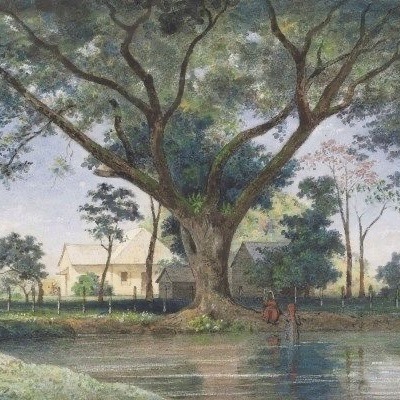
Artists: Michel-Jean Cazabon (1813-1888)
#michel-jean cazabon#fine art#colonial history#trinidad and tobago#caribbean#west indian#french artists#creole#english history#landscape#landscape painting#cottagecore#tropical aesthetic#peaceful atmosphere#forest#forest aesthetic#summer aesthetic#peace and quiet#countryside#country landscape#rural areas#art#history of art#caribbean history#colonialism#art blog#moodboard#art moodboard
80 notes
·
View notes
Text

Michel Jean Cazabon
« Mulatto Girl »
Watercolor, c.1854
#michel jean cazabon#trinidad#trinidad and tobago#art#arte#caribbean#caribbean art#caribbean artist#antilles#caribeño#antillano#creole#kreyol
53 notes
·
View notes
Photo

Michel Jean Cazabon, c.1843 -60| Trinidad Landscape
1 note
·
View note
Text

Michel Jean Cazabon (1813-1888)
Figures bathing in a pool, plantation houses beyond, Trinidad
signed 'Cazabon' (lower left)
watercolour, bodycolour and scratching out on paper
Christie’s
10 notes
·
View notes
Text
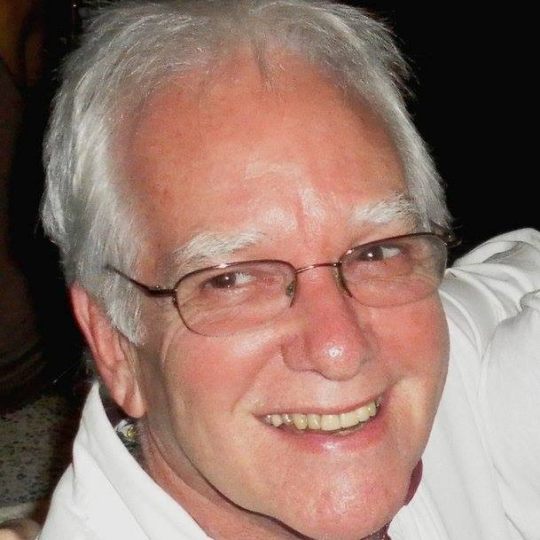
Sexypink - A huge loss to Trinidad and Tobago. Thank you Geoffrey for your vision, kindness and love.
..............................

Geoffrey's contribution to Art history. He was the definitive writer on Cazabon.

An image of one of Cazabon's paintings.
Finally, a beautiful tribute to Geoffrey MacLean from one of many friends.
.................................
TRIBUTE TO GEOFFREY MACLEAN. In each island nation of the Eastern Caribbean, economies of scale make it so that there are only one or two (and if they are lucky, three or four) local experts in some field of study which has little to do with industry or clerical work but everything to do with the national character and its history. Because they are often without precedent, these experts often have had to travel abroad for their training or are otherwise self-trained in their chosen sector of the liberal arts/humanities/social sciences.
Trained architect and avocational art historian Geoffrey MacLean was one of these indispensable sages in the field of visual studies and the built environment. He was the world’s foremost specialist on nineteenth-century landscape and genre painter Michel Jean Cazabon. Cazabon was a partially unwitting member of a global late colonial/early post-colonial landscape painting tradition that encompassed artists such as Mexican José María Velasco, the Chartrand brothers of Cuba, Filipino painter Fernando Amorsolo, and the painters of the Hudson River School in the United States. What all of these artists had in common was their urgent need to capture and pay tribute for posterity to the natural beauty of their respective lands before that “Edenic” verdure was despoiled by then-already encroaching industrialization.
MacLean’s passion for Cazabon pressed him not only to hone further the scholastic abilities he had already developed at Presentation College in his native Trinidad and Bristol University in the U.K. but to travel back and forth between the Caribbean and Europe hunting down examples and collections of Cazabon’s work. He also assisted the government of the Republic of Trinidad & Tobago in the acquisition of some Cazabon works for display in its National Museum and Art Gallery.
MacLean was generous with his knowledge, his time, and with his published materials. Every time I visited him, I came home with an armful of books and catalogues (one of my favorites is an unassuming little pamphlet of a catalogue called Chinese Artists of Trinidad & Tobago which probably played some part in my decision to write the book about Sybil Atteck on which I am currently working with Sybil’s nephew Keith). In graduate school, I relied heavily on MacLean’s Cazabon books for the research I was doing on colonial Latin American and Caribbean painting. MacLean’s enthusiasm for Cazabon’s genre painting, especially his rapt verbal and written descriptions of the late 19th century painting Negress in Gala Dress (pictured here) revealed to me that Cazabon’s paintings of local “types” (e.g., “Negress” instead of named individual) was sometimes a form of real portraiture and thus departed the tipo de país-to-costumbrismo continuum that we sometimes use in Latin American art history. Cazabon loved his people too much and included too much implied biography and other narratives in those paintings, to reduce their subjects to mere “types.” His titles were thus deceptively taxonomic.
Architect, scholar, art gallery director Geoffrey MacLean’s contribution to the study and preservation of T&T’s architecture was legendary even before his passing. He has searched out original plans for fretwork houses and saved some of these architectural jewels from the bulldozers of “developers.” He has done the same for members of the Magnificent Seven around the Queen’s Park Savannah and taught workshops on both the civic and residential architecture of Trinidad & Tobago. As MacLean himself now passes into legend, we are left with the perennial question in these small and mid-sized islands of the Eastern Caribbean each with their two or three experts on local art and architecture – who will pick up the torch?
~ Lawrence Waldron
#galleryyuhself/Geoffrey MacLean#galleryyuhself/publisher/gallery owner/architect#galleryyuhself/bereavement#galleryyuhself/medulla gallery#tumblr/aquarella gallery#tumblr/cazabon books#tumblr/architect#trinidad and tobago#Geoffrey MacLean#architect#visionary#gallery owner
0 notes
Text

Regarded as Trinidad’s first great painter, Michel-Jean Cazabon was born 210 years ago on Corinth Estate in Naparima, San Fernando on this day in 1813. He became famous internationally as an artist who was renowned for his paintings of Trinidad’s sceneries, as well as his portraits of planters, merchants, and the working class during the 19th century.
Cazabon's paintings are to be cherished not only for their beauty, but also for their historical importance, as his paintings have left us with a clear picture of what many aspects of life was like in Trinidad throughout much of the 19th century. His detailed depictions of everyday life are significant for showcasing an untouched Trinidad, before the age of heavy industrialisation during the 20th century.
Additionally, he chose formerly enslaved persons and indentured immigrants as subjects for his portraits, from the plains of Caroni and the tropical forests of Chaguaramas; a unique decision during that time to not choose the wealthy colonial authorities instead.
Cazabon came from a family of “free coloured” immigrants from Martinique who migrated to Trinidad following the Cedula of Population of 1783, and this may have influenced the topics he chose to depict in his art.
He was sent to Paris during the 1830s to study medicine, but instead focused on art and studied under the master painter Paul Delaroche. His pieces were exhibited at the Louvre Museum in Paris and in many galleries throughout Italy and the United Kingdom. He subsequently settled at home in Trinidad where he taught art, and Lord Harris - Governor from 1848 to 1854 - became his patron and collected many of his pieces before Cazabon’s passing in 1888.
This photo showing a drawing of Corbeaux Town, Port of Spain by M J. Cazabon is courtesy of the book “Album of Trinidad: From Drawings by M. J. Cazabon”, which is part of the National Archives of Trinidad and Tobago Special Collection.
References: Cazabon, Michel J. Album of Trinidad 1857. M.N. Pereira, 2002.
#micheljeancazabon #cazabon #nationalarchivestt #nationalarchives #knowyourhistory #trinidadandtobago #caribbeanhistory #westindianhistory
0 notes
Photo

Artist: Michel Jean Cazabon (Trinidadian, 1813–1888)
Title: Port of Spain from Fort George
Medium: oil on canvas
Size:45.7 x 60.9 cm. (18 x 24 in.)
Michel-Jean Cazabon was a Trinidadian painter known for his naturalistic landscapes, portraits, and glimpses of everyday life in his home country during the 19th century. His detailed yet atmospheric depictions of tropical landscapes afforded him international renown. Many of his works were collected by aristocratic Harris family and are now on display in Kent, United Kingdom. Born on September 20, 1813 in Naparima, Trinidad, Cazabon attended school at St. Edmund’s College in Ware, United Kingdom from 1826–1830. Briefly returning to Trinidad, he soon left for Europe to pursue studies in Paris, first in medicine, then in fine art under Paul Delaroche. He traveled throughout France and Italy before settling back in homeland. Over the course of his career, he notably exhibited at the Salon du Louvre in Paris in 1839 and the “Colonial and Indian Exhibition” in London in 1886. Cazabon died on November 20, 1888 in Trinidad at the age of 75.
source: Artnet
16 notes
·
View notes
Photo

Michel-Jean Cazabon (1813 - 1888) - Sunset, Queen’s Park Savannah.
14 notes
·
View notes
Photo

1 note
·
View note
Text
Favourites
I wasn’t Tagged by anyone but it looked like fun soooo… 🤷🏾♂️
Cookie: Chocolate Chocolate-Chunk
Artist: LeRoy Clarke and Michel-Jean Cazabon
Food: Lasagna, pizza, Trini KFC, BBQ ribs, chocolate anything
Movie: The Fifth Element
Show: Currently - Scandal, Of All Time - Star Trek, The Next Generation
Instrument to play: Voice. Singing is my everything.
Social media platform: I'm def the most human and interactive for real on Tumblr. It holds a special place in my heart. I've recently rediscovered an appreciation for Twitter though, thanks to my "secret" woke blerd-ish account lol.
Animals: dogs, whales & dolphins
Color: Purple
Books: The Alchemist by Paulo Coelho, Hidden Figures by Margot Shetterly
Hobby: TV, movies, comics, books and the internet. Also music and overthinking things 😳
School Subject: English Language, Creative Writing & Music
Flower: Red rose
Fictional characters: King T'Challa / Black Panther from Marvel Comics, Luke Cage from the Marvel/Netflix TV series, Kingpin & The Punisher from Marvel/Netflix’s Daredevil, Eli Pope (AKA "Papa Pope") from Scandal, all the main characters on Atlanta, Donna from Suits, Alexander L’Hiboux (AKA The Owl) from the Robert Forward novels, all of the Clone Club from Orphan Black, Damian Wayne / Robin from DC’s animated universe.
I tag @notyourlonewolf @antarcticabysea @manekou @ropeandcoffee @soulsistrin @dogwithsharperteeth @sheeeenabobeeeena @julierthanyou @lyndatia @nabyss @thepinkcornmoon @apricotica and @bubbles-burst.
6 notes
·
View notes
Link
Dans une tribune au Parisien-Aujourd’hui en France, le collectif Langue française et cent signataires des cinq continents appellent Emmanuel Macron à protéger la langue française.

Le collectif Langue française et cent signataires des cinq continents dont les représentants des associations partenaires.
« La langue française va mal. Étouffée par l’anglo-américain, elle voit désormais son usage même évincé par celui-ci. Confrontée à cette invasion, notre mémoire renvoie en écho un passé douloureux de soumission et d’oubli de soi. Une majorité capitulatrice plaidera le réalisme, hermétique aux cris sourds d’une identité enchaînée par une pseudo-langue universelle en réalité servante d’un maître particulier. Le français outragé, le français brisé, le français martyrisé. Mais le français rendu à la dignité si, monsieur le président, vous choisissez de suivre enfin la trace laissée par l’esprit de résistance.
Il est demandé au chef de l’Etat, premier contributeur à l’Organisation internationale de la francophonie (OIF), de montrer l’exemple :
1) en renonçant à l’emploi de l’anglo-américain à l’étranger, quand le français demeure l’une des deux premières langues d’usage d’une majorité d’organes internationaux ; en renonçant à l’utilisation de l’anglo-américain en France même, décourageant ainsi nos visiteurs de pratiquer une langue désertée par ses locuteurs naturels.
2) en renforçant par une loi le dispositif linguistique présent en en rendant notamment l’application contraignante ; en rappelant aux autorités judiciaires leur pouvoir de poursuivre les contrevenants ; en rappelant les préfets à leur obligation de contrôle de légalité pour les collectivités en infraction.
3) en interrompant la marche suicidaire vers l’intronisation de la langue anglo-américaine comme seconde langue officielle de la nation ; ainsi devrez-vous mettre un terme au projet sacrilège prétendant dispenser dans les établissements scolaires des cours de matières générales en anglo-américain.
Du pays source de la langue commune, la francophonie attend légitimement le signal fort d’une résistance enfin consciente de l’enjeu. Il est donc attendu du chef de file de l’OIF que vous êtes qu’il mette la politique étrangère de la France en accord avec les revendications humanistes de l’organisation, fidèle à la langue des Lumières, celle de l’égalité et du partage. À cet égard, nous déplorons l’installation au poste de secrétaire général de l’OIF d’une personnalité rwandaise membre actif d’un régime politique détestable. Il est attendu du chef de file de l’OIF qu’il défende l’usage de la langue française, non qu’il le rétrécisse. Les francophones se sont émus de votre adoubement, lors du dernier Sommet de la francophonie, de l’anglo-américain comme langue d’usage pour le monde. À en juger par le dynamisme économique d’une majeure partie de l’Afrique francophone, comme par la vitalité du Canada francophone, leur langue d’usage — le français — en vaudrait pourtant d’autres.
Lors de ce Sommet, nous vous avons également entendu ceindre la langue française du titre de langue de la création. Il conviendrait déjà que l’Etat encourageât les appellations françaises pour baptiser nouveaux produits et services créés par toute entreprise revendiquant son aide ; mieux, par toute entreprise où entrent des capitaux d’Etat. Or il se produit très exactement l’inverse. Faute d’avoir su précéder le Québec comme référence mondiale pour la défense du français, du moins sachons nous inspirer de sa pugnacité et abandonner nos comportements serviles. Il y va de notre identité nationale et de l’avenir de la francophonie. »
Les signataires
Associations du collectif Langue française
Louis Maisonneuve et Dr Pauline Belenotti, Président et secrétaire d’Observatoire des Libertés, France. Philippe Carron et Jacques Badoux, responsables de l’antenne Suisse romande pour le collectif, Suisse. Jean-Paul Perreault, Président du Mouvement Impératif français, Montréal, Canada. Philippe Reynaud et Lucien Berthet, Président et secrétaire de Défense de la Langue Française-Savoie, France.
Associations partenaires
Pierrette Vachon L’Heureux, Présidente de l’Association pour le soutien et l’usage de la langue française, Québec-ville, Canada. Albert Salon, docteur d’État, ancien ambassadeur, Président d’Avenir de la langue française (ALF), Paris, France. Régis Ravat Président de l’Association Francophonie Avenir (AFRAV), Nîmes, France. Edgar Fonck, directeur de l’Association pour la Promotion de la Francophonie en Flandre, De Haan, Belgique. Alain Ripaux, Président de Francophonie Force Oblige, Appilly, France. Catalina Hadra, secrétaire générale de Dicifran (Association pour la diffusion de la Civilisation Française en Argentine), Buenos Aires, Argentine.
Personnes privées
Ilyes Zouari Président du Centre d’étude et de réflexion sur le monde francophone, France. Jean-Pierre Luminet, astrophysicien, directeur de recherche au CNRS, Marseille, France. Tahar Ben Jelloun, écrivain, Prix Goncourt, France, Maroc. Michel Bühler, auteur-compositeur et chanteur. Sainte- Croix, Suisse. Vladimir Fédorovski, écrivain, Neuilly, France. Rémy Pagani, Maire honoraire de la ville de Genève, Suisse. Zachary Richard, auteur-compositeur et chanteur (« Travailler c’est trop dur »), Louisiane, États-Unis d’Amérique. Jean-Marie Rouart, écrivain, membre de l’Académie française, Paris, France. Jean Ziegler, homme politique, écrivain, vice-président du comité consultatif du « conseil des droits de l’homme » de l’ONU, Suisse. Pierre Perret, chanteur, Seine-et-Marne, France. Jeannie Longo, cycliste, championne olympique et du monde, Savoie, France. Boris Cyrulnik, neuropsychiatre, Toulon, France. Guimba Konate, ingénieur, ex-conseiller au Ministère des Télécommunications du Sénégal, Sénégal. Didier Van Cauwelaert, écrivain, Prix Goncourt, France. Jacques Drillon, journaliste-écrivain, Paris, France. Lakhdar Amrani, professeur de français, Algérie. Benoit Bergeron, enseignant en biologie, Montréal, Canada. Anna Maria Campogrande, fonctionnaire européenne, président d’Athena, Association pour la défense et la promotion des langues officielles de la Communauté européenne, résident à Bruxelles, Belgique. Huguette Lemieux, interprète, Ottawa, Canada. Michel Feltin-Palas, journaliste, Paris, France Marianne Périllard, traductrice, Lausanne, Suisse. Erasmia Boutsikari, avocate, Gytheion Grèce. Agnès Rosenstiehl, auteur, illustratrice (« Mimi Cracra »), Paris, France. Ingrid Stromman, professeur de français et d’anglais, Trondheim, Norvège. François Delarue, cardiologue, Paris, France. Jean-Pierre Siméon, poète et dramaturge, directeur de la collection poésie, éditions Gallimard, Clermont-Ferrand, France. Paul Miédan-Gros, pilote de ligne, ancien Président du Syndicat National des Pilotes de Ligne, Santeny, France. Rosana Pasquale, professeur de français, université nationale de Lujan-Buenos Aires, Argentine. Fernand Melgar, cinéaste, Lausanne, Suisse. Yvan Lepère, journaliste, Bruxelles, Belgique. Alexandre Riblet, professeur de français, Mexico, Mexique. Angel Viñas, enseignant, ancien directeur à la Commission européenne, Bruxelles, Belgique. Miltiades Vassilatos, ingénieur, Montréal, Canada. Renato Corsetti, enseignant, Londres. Royaume-Uni. Thierry Saladin, médecin, vice-président de l’AFRAV, Montpellier, France. Paolo Monaco, expert de l’organisation internationale pour la sécurité de la navigation aérienne, Bruxelles, Belgique. Jean-Louis Carpe, professeur de philosophie, Orléans, France. Pia Sylvie Marquart, enseignante, Hurghada Égypte. Monique Phuoeng, directrice de société, Phnom Penh, Cambodge. Rodolphe Clivaz, artiste, directeur de théâtre, Lausanne, Suisse. Alain Borer, écrivain, poète, Los-Angeles (E.U.A.) et Paris, France. Olivier Belle, auteur-compositeur et chanteur, Neuilly, France. Étienne Guilloud, pasteur, Bière, Suisse. Yves Montenay, Président de l’Institut culture, économie et géopolitique, vice-président de l’ALF, France Bérénice Franca Vilardo Irlando, ex-fonctionnaire du ministère des Affaires étrangères d’Italie, Rome, Italie. Valeria Pancrazzi, professeur de français, Tigre-Buenos Aires, Argentine. Philippe Mougel, conseiller artistique, Clermont-Ferrand, France. René Fournier, maire honoraire de Carignan, Québec, Canada. Louise Chevrier, romancière, Chambly, Québec, Canada. Micheline Khemissa, enseignante, Écublens, Suisse. Daniel Perrenoud, médecin, Lausanne, Suisse. Gérard Laurin, professeur de français, Gatineau, Québec, Canada. Ralph Stehly, professeur émérite de l’Université de Strasbourg, France. Claude Filatrault, conseiller à Hydro-Québec, Québec-ville, Canada. Françoise Carré, enseignante, Landevieille, France. Philippe Prudhomme, professeur de français, Président de l’association « Les amis de Bougainville », Papeete. Tahiti, France. Benoît Cazabon, linguiste, enseignant en biologie, cofondateur et ex-directeur de l’Institut franco-ontarien, Vernet, Ontario, Canada. Claude Sybers, auteur littéraire, dramaturge Saly, Sénégal. Jean-Louis Brion, ingénieur, Nouvain-la-Neuve, Belgique. Veronica Gebauer, professeur de français, Université nationale de Cordoba, Argentine. Luc Charrette, pédiatre, Gatineau, Québec, Canada. Cyril R. Vergnaud, professeur de langues, Pingtung, Taiwan. Nicolae Dragulanescu, professeur d’université, Président de la Ligue de coopération culturelle et scientifique Roumanie France, Bucarest, Roumanie. Bert Schumann, ingénieur, Rennes, France. Michel Donceel, violoneux, Bertirx, Belgique. Gérard Cartier, ingénieur et auteur, L’Étang-la-Ville, France. Laurent Martin, pianiste, Vollore, France. Madana Gobalane, Président de l’association indienne des professeurs de français, Chennai, Inde. Fara Nume, professeur de français, Temara, Maroc. Alicia Santana, professeur de français, Tigre-Buenos Aires, Argentine. Jean Maisonneuve, pilote de ligne, Billom, France. Évelyne Raimbault, secrétaire, Fontenay-sous-Bois, France. Daniela L. Martinez, professeur de français, Buenos Aires, Argentine. Nicolas Bitterlin, ouvrier du livre, Québec-ville, Canada. Bernard Joss, dessinateur, Lausanne, Suisse. Geneviève Despinoy, professeur d’espagnol, Agen, France. Emilie Szczukiecka, enseignante, Wroclaw Pologne. Damien Feron, photographe. Madrid, Espagne. Ines Mensi, enseignante, Tunis, Tunisie. Dominique Lambilotte, fonctionnaire de police, Bertrix, Belgique. Kader Ali Lahmar, inspecteur d’enseignement du français, Oran, Algérie. Johan Nijp, professeur de français, Groningen, Pays-Bas. Mohamed Farhat, enseignant, Joub Jenin, Liban. Nathalie Pacico, technicienne, Courcelles, Belgique. Didier Catineau, journaliste, écrivain, Plassay, France. Jean-Pierre Roy, réalisateur, Montréal, Canada. Roger Rochat, ingénieur, Cottens, Suisse. André Creusot, administrateur, Ottawa, Canada.
0 notes
Text

Michel Jean Cazabon
« French Negress in gala dress »
#michel jean cazabon#art#arte#caribbean#trinidad#trini art#trinidadian art#trinidad and tobago#caribbean art#caribbean artist#antilles#caribeño#antillano#black portraiture
19 notes
·
View notes
Photo
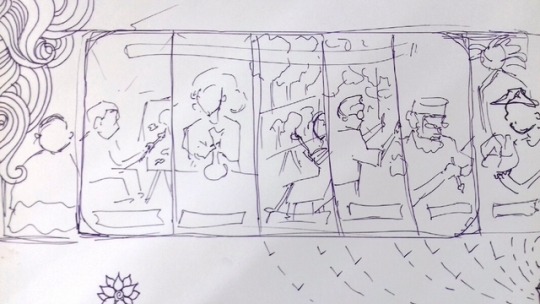
Mural Update
Seven artists: Pat Bishop, Michel Jean Cazabon, Vera Baney, Lisa O’Connor, Carlisle Chang, Leroy Clarke and Peter Minshall featured in separate panels, each portraying their field of visual art so they can be easily identified as artists.
1 note
·
View note
Photo

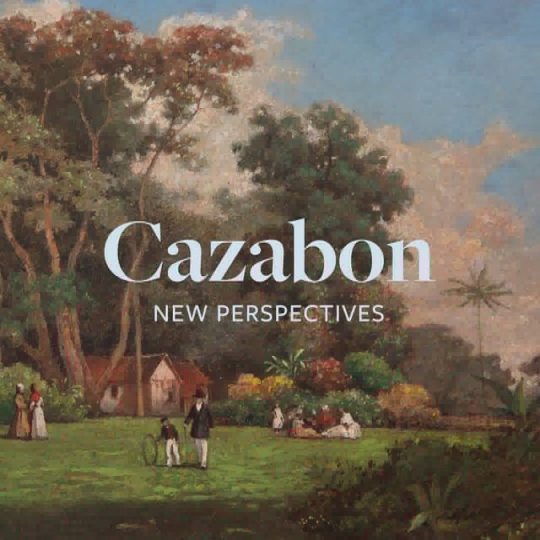



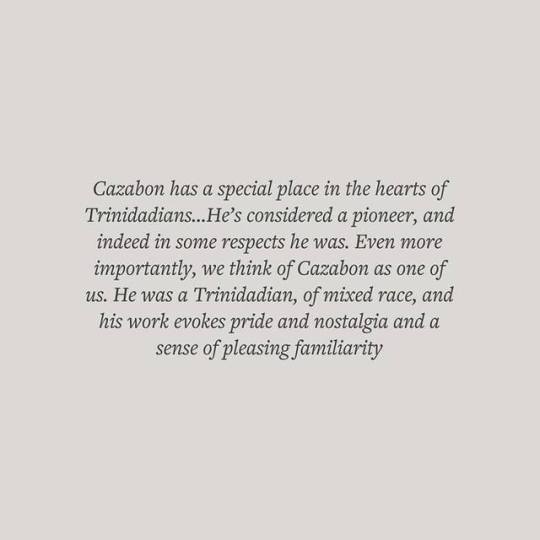
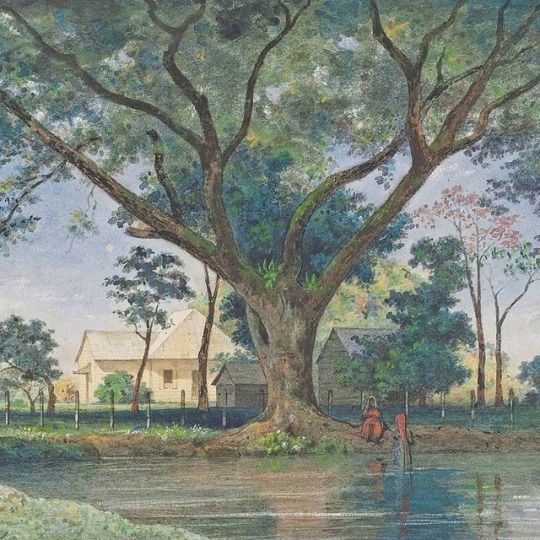

#Galleryyuhself/books#Galleryyuhself/Art books/Cazabon#Galleryyuhself/Trinidad and Tobago Painter#Painter#Caribbean Cazabon#Jean Michel Cazabon#classical painter
3 notes
·
View notes
Text
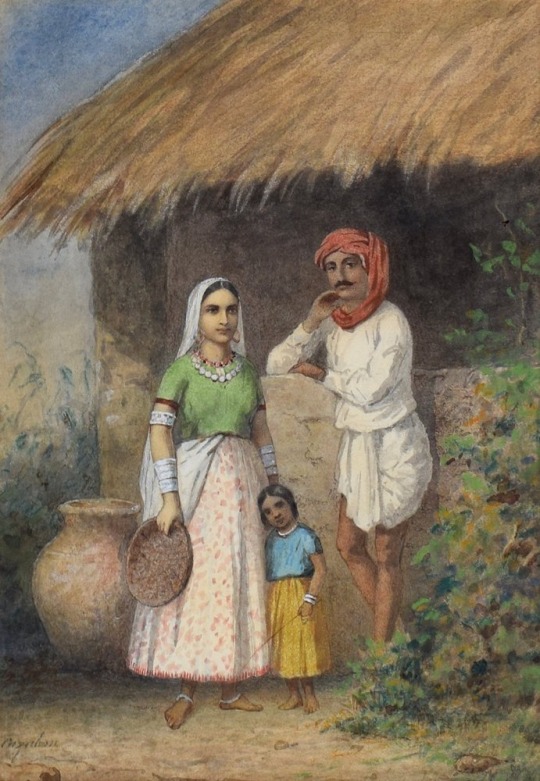
Michel Jean Cazabon
« East Indian Family »
Watercolour on paper, 1886
#michel jean cazabon#art#arte#caribbean#caribbean art#trinidadian art#trini art#trinidad and tobago#trinidad#indotrinidadian#indocaribbean#caribbean artist#antilles#caribeño#antillano#antillana
11 notes
·
View notes
Text

Michel Jean Cazabon
« East Indian Woman »
Watercolour on paper, 1886
#michel jean cazabon#indocaribbean#indotrinidadian#art#arte#caribbean#caribbean art#trinidad#antilles#caribeño#trinidadian art#trinidad and tobago#caribbean artist#antillano#antillana#trini art
3 notes
·
View notes